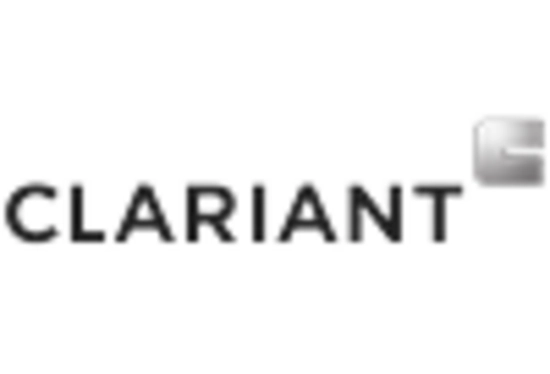Diverse Application Areas
The versatility of microencapsulated paraffin phase change materials is a notable driver for the Microencapsulated Paraffin Phase Change Material Market. These materials find applications in various sectors, including textiles, electronics, and building materials. For instance, in the textile industry, microencapsulated paraffin PCMs are utilized in clothing to provide temperature regulation, enhancing comfort for the wearer. In electronics, they are employed to manage heat in devices, thereby improving performance and longevity. The broad range of applications indicates a robust market potential, with estimates suggesting that the demand for microencapsulated paraffin PCMs could increase by over 20 percent in the coming years as industries recognize their benefits.
Growth in Construction Sector
The construction sector's expansion is likely to significantly influence the Microencapsulated Paraffin Phase Change Material Market. As new building projects emerge, there is a growing need for materials that enhance thermal performance and energy efficiency. Microencapsulated paraffin PCMs are increasingly integrated into building materials, such as insulation panels and wallboards, to improve thermal regulation. Recent data indicates that the construction industry is projected to grow at a compound annual growth rate of approximately 5 percent over the next few years. This growth is expected to drive demand for innovative materials, including microencapsulated paraffin PCMs, as builders seek to meet energy efficiency standards and enhance occupant comfort.
Rising Demand for Energy Efficiency
The increasing emphasis on energy efficiency across various sectors appears to be a primary driver for the Microencapsulated Paraffin Phase Change Material Market. As industries strive to reduce energy consumption and lower operational costs, the adoption of phase change materials (PCMs) has gained traction. These materials can store and release thermal energy, thereby optimizing energy use in buildings and industrial processes. According to recent estimates, the energy savings achieved through the implementation of microencapsulated paraffin PCMs can reach up to 30 percent in certain applications. This trend is likely to continue as regulatory frameworks increasingly favor energy-efficient solutions, further propelling the market for microencapsulated paraffin phase change materials.
Increasing Awareness of Sustainable Solutions
The growing awareness of sustainable building practices is emerging as a key driver for the Microencapsulated Paraffin Phase Change Material Market. As consumers and businesses alike prioritize sustainability, the demand for eco-friendly materials is on the rise. Microencapsulated paraffin PCMs offer a viable solution by reducing energy consumption and minimizing carbon footprints. Recent surveys indicate that a significant percentage of consumers are willing to pay a premium for sustainable products, which suggests a shift in market dynamics. This increasing preference for sustainable solutions is likely to encourage manufacturers to invest in microencapsulated paraffin PCMs, thereby expanding their market presence and driving innovation.
Technological Innovations in Material Science
Technological advancements in material science are playing a crucial role in shaping the Microencapsulated Paraffin Phase Change Material Market. Innovations in microencapsulation techniques have led to improved performance and cost-effectiveness of PCMs. Enhanced encapsulation methods allow for better thermal stability and increased energy storage capacity, making microencapsulated paraffin PCMs more appealing for various applications. Furthermore, research indicates that the market for advanced materials is expected to grow significantly, with projections suggesting a rise in demand for high-performance materials. This trend indicates that ongoing research and development efforts will likely continue to drive the adoption of microencapsulated paraffin phase change materials across multiple sectors.

















Leave a Comment